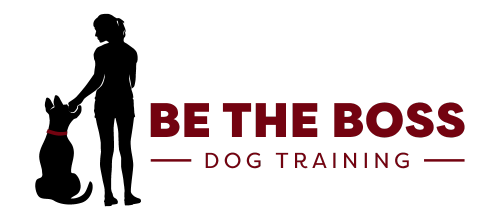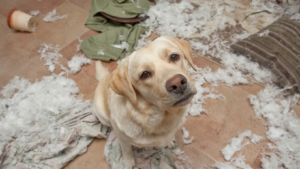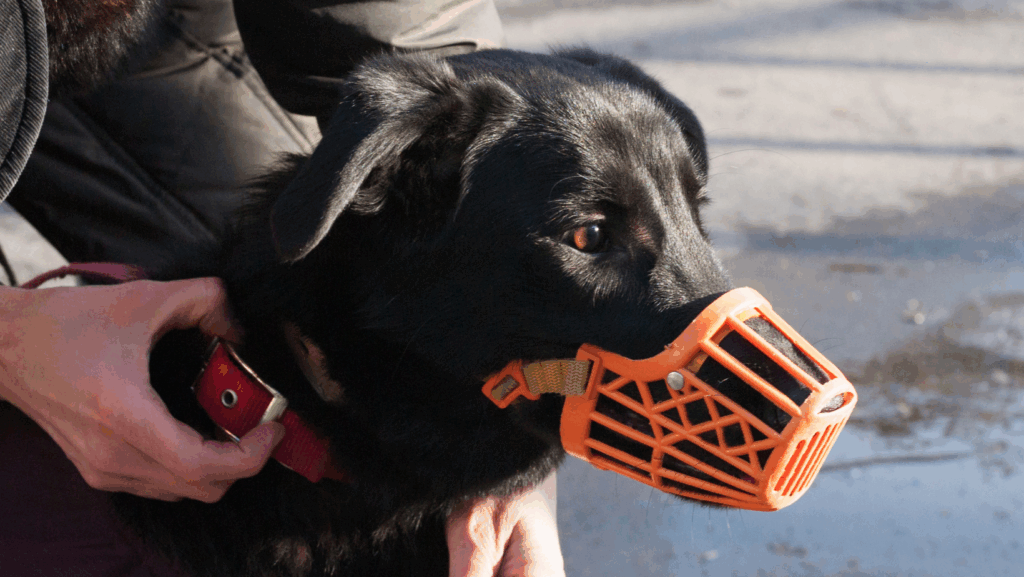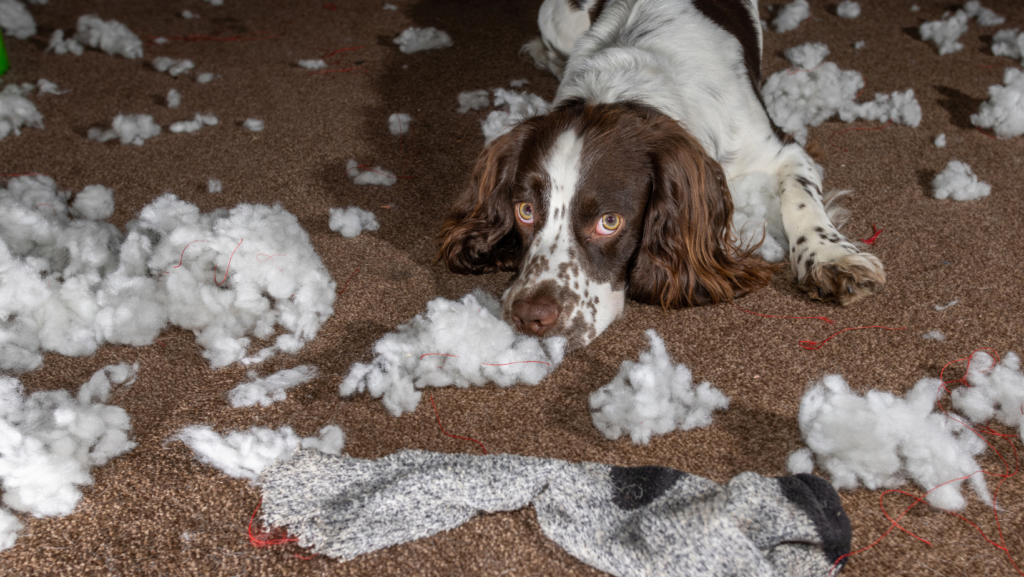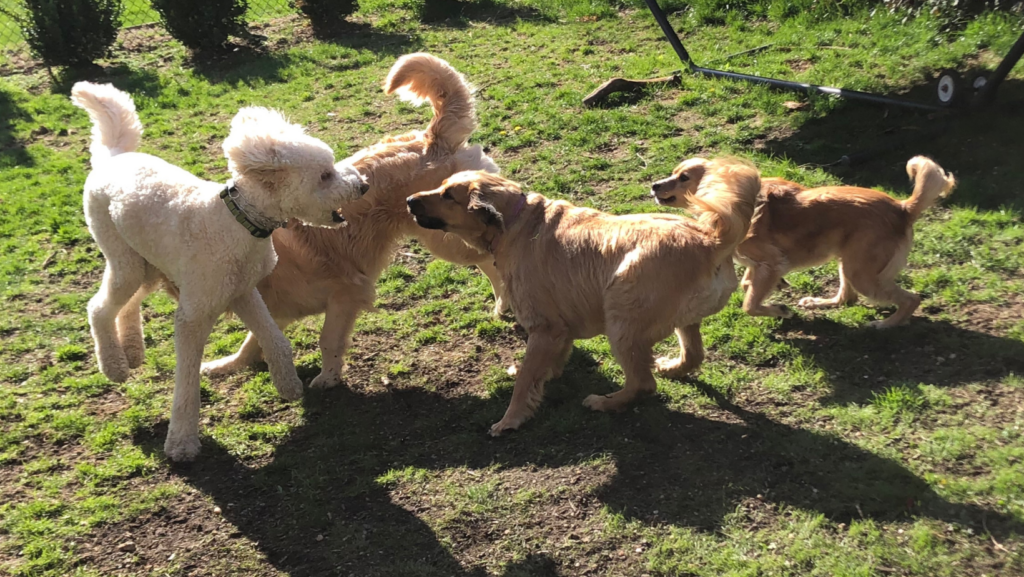What if your dog’s worst behaviors weren’t signs of defiance… but signs of dysregulation? What if the barking, chewing, digging, and destruction weren’t problems to eliminate—but messages trying to be heard? Most dog owners are desperate to stop the chaos, but few stop to ask what’s fueling it. And fewer still know how to tell the difference between a dog who’s acting out… and a dog who’s falling apart.
This post isn’t just about behavior—it’s about what’s beneath it. It’s about the nervous system, the psychology of unmet needs, and the invisible emotional gaps that turn good dogs into daily disasters. If you’ve ever felt like you’ve tried everything—more toys, more walks, more treats—but nothing’s working… this is the part no one told you.
Because structure calms what affection can’t.
And discipline, when done right, doesn’t control your dog—it frees them.
Let’s dig into what’s really going on.
The Behavior Is the Symptom—Not the Problem
Most people rush to ask how to stop the chewing, the barking, the digging—but very few pause to ask why their dog is doing it in the first place, and even fewer are prepared for what that answer might reveal about the emotional state of the animal they live with. Because what if that shredded shoe or scratched-up doorframe isn’t disobedience, but a desperate attempt by your dog’s nervous system to regulate something it doesn’t know how to process? What if those seemingly random explosions of energy are actually signs of internal misalignment—a body and brain trying to stabilize in a world that feels too unpredictable, too unstructured, too much?
Chewing isn’t just about teeth or toys—it’s often about nervous energy looking for an exit, or a brain without leadership trying to make its own rules in the absence of clarity, and digging isn’t just about the backyard, it’s about a mind that doesn’t know how to rest, about a dog who’s trying to create space when no one has taught them how to stay calm in place. Barking, especially when it spikes out of nowhere or seems to have no off-switch, is rarely just a noise problem—it’s often the alarm system of a dog who’s on high alert because they’ve never been taught how to feel safe unless they’re in control.
These behaviors aren’t malfunctions, they’re signals—like the check engine light on a dashboard, flashing urgently not because the light itself is broken, but because something deeper underneath needs attention, and if all you do is try to shut off the light, you’ll never fix what’s actually wrong. So instead of asking “How do I stop this behavior?”, try asking, “What is this behavior trying to solve?” Because when a dog is destructive, it’s rarely about rebellion—it’s about dysregulation, and behind almost every chewed-up cushion or broken boundary is a dog trying to self-soothe in a world that hasn’t given them enough leadership, predictability, or clarity.
What if your dog doesn’t need more exercise, more toys, or more freedom? What if they need you—not as a source of affection, but as a source of structure, rhythm, and calm decision-making? Because the truth is, most destructive dogs aren’t out of control… they’ve just been left to lead, and that’s a burden most dogs were never built to carry.
And when we stop trying to suppress the behavior and start listening to what it’s trying to say, something incredible happens—they stop chewing to cope, they stop barking to survive, they stop digging to escape, and instead… they rest, they listen, they trust, because finally, their nervous system can.
Nervous Systems Need Jobs—Not Just Toys
What if your dog’s destruction has less to do with boredom and more to do with identity? What if chewing the furniture or barking at shadows isn’t your dog being bad—but your dog being lost in a world where they have no clear role to play?
We’re often told that the solution to destructive behavior is enrichment—buy the toys, stuff the Kongs, freeze the lick mats—and while those tools can be helpful, they only address the surface tension, not the emotional chaos happening underneath. Enrichment might distract your dog for a few minutes, but it doesn’t give their nervous system a reason to settle; it doesn’t tell them where they belong, what’s expected, or who’s steering the ship when life gets loud.
A dog without a job will always find one—whether that means redecorating your baseboards, barking nonstop in your absence, or obsessively digging escape holes in the backyard—and not because they’re bad, but because their brain, their drive, their instincts, are screaming for an outlet that makes sense. Without structure, energy doesn’t disappear—it mutates into noise, pacing, chewing, lunging, and barking, and before you know it, the dog isn’t disobedient… they’re just directionless.
The most overlooked truth in dog training is this: stimulation is not the same as regulation. A puzzle feeder activates the mouth, but structure stabilizes the mind. You can’t out-toy a nervous system that doesn’t know how to turn off, and you can’t soothe a high-drive dog with affection alone. They need rhythm. They need decisions made for them until they learn how to make better ones on their own. That’s what leash work is for. That’s what the place command is for. That’s what calm repetition teaches.
So instead of asking, “What will keep my dog busy while I work?” the better question is, “What’s the role my dog plays in this home, and how do I remind them of it daily?” Because when dogs are given consistent jobs—even simple ones like resting on command or walking with accountability—they begin to release the need to invent chaos. And when they stop having to lead, they finally feel safe enough to follow.
If you’re tired of the surface-level fixes and want to join a community of dog owners learning to lead their dogs with structure, not just affection—come join us in our free Facebook group, where we break down behavior into biology, leadership, and real-life transformation.
When Barking Means “I’m Alone in This”
We often assume that barking when a dog is left alone is a sign that they simply miss us—that their love is so deep, their bond so strong, they just can’t bear the separation—but what if that’s not the full story? What if the barking isn’t about love at all, but about panic? What if your dog isn’t heartbroken, but helpless—thrown into a state of nervous system freefall the moment you walk out the door because no one ever taught them how to exist in the world without your presence acting as their anchor?
Separation anxiety isn’t a character flaw in your dog—it’s a lack of leadership, a gap in their internal structure that leaves them unable to self-soothe, to trust the silence, to hold themselves together without external scaffolding, and when we respond to that anxiety with more affection, more babying, more reassurance, we may be deepening the problem we think we’re solving, because soothing without strengthening often reinforces dependency, not confidence. If every exit is a dramatic goodbye and every return is a celebration, your dog learns that your absence is a rupture, not a rhythm—and over time, the nervous system starts to anticipate pain every time you pick up your keys.
What if the goal isn’t just to make your dog feel better about being alone, but to teach them how to be better when they are? What if calm, neutral departures—not dramatic ones—are what teach your dog to expect peace instead of panic? What if your dog’s ability to regulate in solitude is directly tied to how much clarity, direction, and leadership they’ve received from you when you are together?
The barking isn’t just noise—it’s a confession: I don’t know how to do this without you. And while it’s tempting to see that as endearing or loyal, it’s actually a warning sign that your dog doesn’t yet have the emotional tools to navigate life independently, and no amount of affection will replace the kind of leadership that teaches them how to sit in discomfort, how to trust the quiet, and how to hold themselves steady when the world around them feels uncertain.
Because confidence isn’t built through coddling—it’s built through consistency, boundaries, repetition, and the quiet power of leadership that says, “I’ll show you how to be okay, even when I’m not in the room.”
If this section hit home, and you’re wondering where your dog’s anxiety is really coming from, check out this in-depth article that breaks down the root causes of separation anxiety—what causes it, what worsens it, and how to rebuild confidence the right way.
The Difference Between Discipline and Disconnection
What if the reason your correction isn’t working isn’t because your dog is stubborn, but because they’re confused? What if instead of grounding your dog back into reality, your correction is pushing them further into chaos—not because it’s wrong to correct, but because it’s coming too soon, without context, without clarity, without the emotional groundwork that allows discipline to land instead of just shock?
Corrections are not the enemy. In fact, used well, they are one of the clearest and kindest ways to communicate with a dog who’s lost in the overwhelm of their own instincts. But when we correct a behavior without understanding what’s driving it—without first seeing the stress signals, the confusion, the buildup of anxiety underneath—it’s like yanking the wheel of a car that’s already spinning on ice: all it does is send the dog into deeper instability, and worse, it teaches them that discomfort comes out of nowhere, that pressure isn’t something they can trust, and that your leadership is something to brace against instead of lean into.
So before we talk about how to correct, we have to ask: has the dog been taught? Has the dog been guided into understanding what the right choice even looks like, or have we jumped to consequence before building comprehension? Balanced training means we use tools, we use pressure, we use accountability—but we never weaponize them. We don’t correct a dog just because they’re annoying us, or because we’re frustrated, or because we expect them to “know better.” We correct after the dog has been given the information, after they’ve had a chance to succeed, after we’ve established a baseline of calm, relational safety—and only then does the correction function the way it was meant to: as clarity, not conflict.
Because a correction without relationship becomes fear. A correction without structure becomes chaos. And a correction without timing becomes noise. But when a dog knows what’s expected—when they’ve been shown the path and then gently, firmly redirected when they step off it—that’s when discipline becomes a gift, not a punishment. That’s when correction creates connection, not disconnection. And that’s when the nervous system doesn’t brace against you—but finally relaxes into your lead.
Conclusion
If your dog’s behavior could talk, what would it be begging you to understand? Would it be asking for more walks—or more clarity? More affection—or more leadership? You came here looking for ways to stop the chewing, the digging, the barking—but maybe what you found was something deeper: the realization that your dog doesn’t just need to behave better… they need to feel safer.
Because the truth is, you can’t correct what you haven’t taught. You can’t discipline a nervous system that’s already in survival mode. And you can’t fix chaos without first becoming the calm. Behavior is never random—it’s a mirror. And when you look past the surface, past the noise and the mess and the frustration, you might just see a dog who’s been waiting for someone to lead them—clearly, consistently, and without fear.
What happens when you stop fixing… and start listening? That’s when everything begins to change.
Every dog deserves to feel seen. Every owner deserves support. If you’re ready to get help personalized to your dog’s needs—whether you’re at your breaking point or just want a roadmap—we’re here. Reach out to us here and let’s talk about how we can help bring your dog back into balance.
